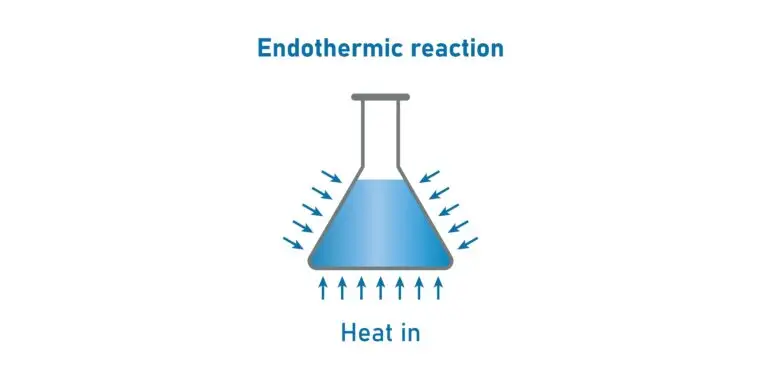Endothermic Reaction

Table of Contents
What are Endothermic Reactions
An endothermic reaction is a specific chemical reaction that absorbs energy from its surroundings, typically heat. The energy absorbed causes the reaction products to have higher energy levels than the initial reactants.
This increase in energy is reflected in a positive change in enthalpy (∆H) for the reaction. An example of an endothermic reaction is the decomposition of calcium carbonate (CaCO3) into calcium oxide (CaO) and carbon dioxide (CO2) when heat is applied.
Endothermic Reaction Properties
Energy Absorption
Endothermic reactions are chemical processes that require energy input from the surroundings to proceed. This energy is absorbed by the reactants, leading to a decrease in the temperature of the environment.
The absorbed energy is typically in the form of heat but can also be light or electrical energy, depending on the specific reaction involved. This type of reaction is essential in various natural and industrial processes, such as photosynthesis in plants and certain chemical synthesis reactions.
Bond Breaking and Energy Input
During an endothermic reaction, the initial energy input breaks the chemical bonds within the reactant molecules. This process requires overcoming the bond strengths, so energy is absorbed to achieve this.
As a result, the reacting molecules absorb the energy and break their bonds, forming higher-energy intermediate species. This energy absorption distinguishes endothermic reactions from exothermic ones, where energy is released during bond formation.
Endothermic Reaction in Thermodynamics
In thermodynamics, endothermic reactions exhibit a positive change in enthalpy (∆H > 0), signifying that the system absorbs heat during the reaction. This heat absorption reduces the internal energy of the system, reflecting the energy required to break bonds and initiate the reaction.
Energy Diagrams
Endothermic reactions are often illustrated using energy diagrams, also called potential energy diagrams. These diagrams show that the reactants begin at a lower energy level and absorb energy to reach the higher energy level of the products. The activation energy in an endothermic reaction is the energy needed to start the reaction by breaking the bonds within the reactants.
Applications of Endothermic Reactions
Endothermic reactions find practical applications in both daily life and various industries:
Cooling Systems: Endothermic reactions are used in refrigerators and air conditioners. These systems absorb heat from their surroundings, cooling the interior spaces effectively.
Instant Cold Packs: Endothermic reactions are employed in instant cold packs used for therapeutic cooling. These packs rapidly absorb heat from their surroundings, quickly relieving pain or swelling.
These applications demonstrate how endothermic reactions can be harnessed to achieve cooling effects efficiently and conveniently.
Examples of Endothermic Reactions
Here are some common examples of endothermic reactions:
Dissolution of ammonium nitrate (NH4NO3) in water: NH4NO3(s) + H2O(l) → NH4+(aq) + NO3-(aq) This reaction is utilized in instant cold packs to provide rapid cooling.
Melting of ice: H2O(s) → H2O(l) Energy is absorbed to break the hydrogen bonds in ice molecules, resulting in the transition from solid ice to liquid water.
Endothermic decomposition of calcium carbonate (CaCO3) upon heating: CaCO3(s) → CaO(s) + CO2(g) This reaction is involved in the production of lime, where calcium carbonate breaks down into calcium oxide and carbon dioxide upon heating.
Related Links
Chemical Reaction
Exothermic Reaction
Fusion
Heat